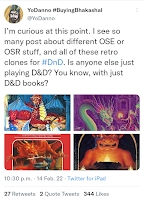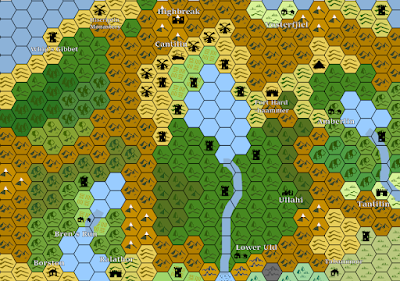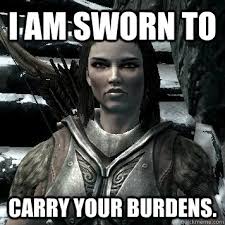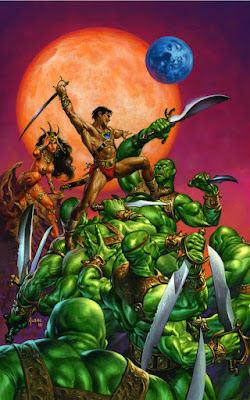I want to talk about one of the most contentious
mechanical issues in table-top RPGs: Encumbrance.
I know a few readers are just going to shrug and skip this one. There are plenty of tables that see encumbrance as such a pain in the ass that they simply ignore it. Hell, when the Dungeons & Dragons Next playtest was running it took them months to notice that they forgot to include an encumbrance mechanic. The developers admitted in the development blog that don't use it themselves.
And for every GM that just throws encumbrance out, there is a few more who ensure that a Howard's Handy Haversack or Bag of Holding shows up in an early treasure hoard, then "forgets" the item's limitations. They usually follow it up with a Murlynd's Spoon, Field Rations Box, Portable Oasis, or Wand of Goodberry. And maybe Decanter of Endless Water or Alchemy Jug for good measure. Or if you are mean like me, an Omelet of the Planes.
But here's the thing: Encumbrance can make your game better.
When your players have to manage resources, it introduces constraints into the game that the players must adapt to. Needing to choose their gear carefully, because they need to carry it all. It creates limits to how long they can spend in the dungeon by limiting the torches an oil that they can carry. Not to mention the rations,
This in turn gives them reason to engage hirelings and animals. This requires them to spend the gold they are bringing out of the dungeon, which makes treasure seem meaningful.
It also makes exploration more interesting, as the PCs have to limit their range, plan for diversions, take into account terrain. They will have a reason to push themselves during a mission, and find ways to make it pay because It represents an investment of time and planning. Developing a company to ensure supply trains might even be in the cards.
When the strategy, logistics, and planning pay off, it can be incredibly satisfying.
Why We Ignore It
Here's the thing: the way almost every edition of Dungeons & Dragons traditionally handles encumbrance is dull and fiddly. It feels like accounting. I will cover the common methods of tracking from D&D (and other mainstream TTRPGs) and then compare with some if the more innovative tools in the indie and OSR scenes you might want to consider as a replacement.










